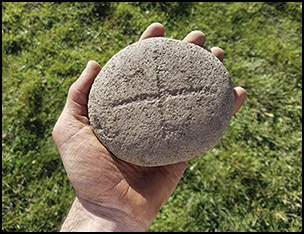Article contents
‘Differing in status, but one in spirit’: sacred space and social diversity at island monasteries in Connemara, Ireland
Published online by Cambridge University Press: 24 April 2018
Abstract

The Christianisation of Ireland in the fifth century AD produced distinct monastic practices and architectural traditions. Recent research on Inishark Island in western Ireland illuminates the diverse material manifestations of monasticism and contributes to the archaeological analysis of pilgrimage. Excavations revealed a ritual complex (AD 900–1100) developed as both an ascetic hermitage and a pilgrimage shrine. It is argued that monastic communities designed ritual infrastructure to promote ideologies of sacred hierarchy and affinity that legitimated their status and economic relations with lay worshippers. In a global context, this research emphasises how material and spatial settings of pilgrimage can accommodate and construct social distinctions through patterns of seclusion, exclusion and integration in ritual.
- Type
- Research
- Information
- Copyright
- Copyright © Antiquity Publications Ltd, 2018
References
- 5
- Cited by


